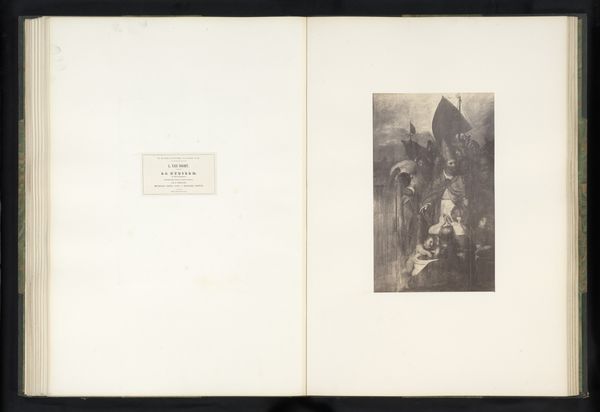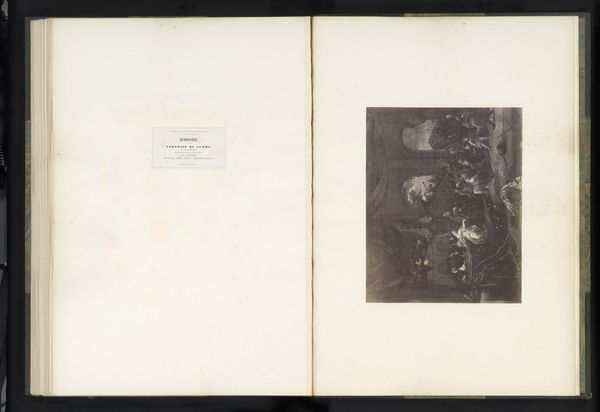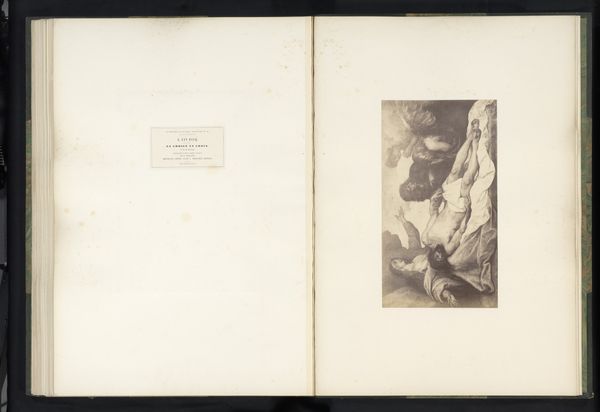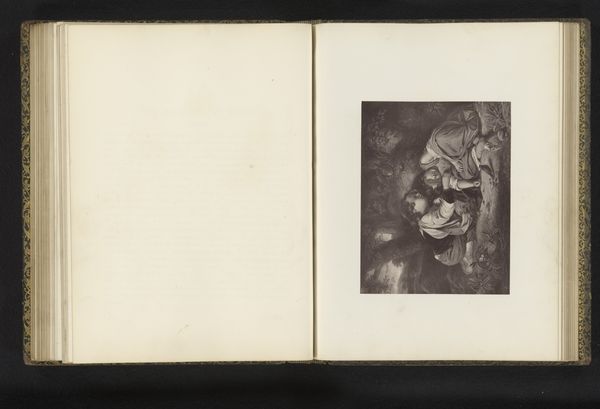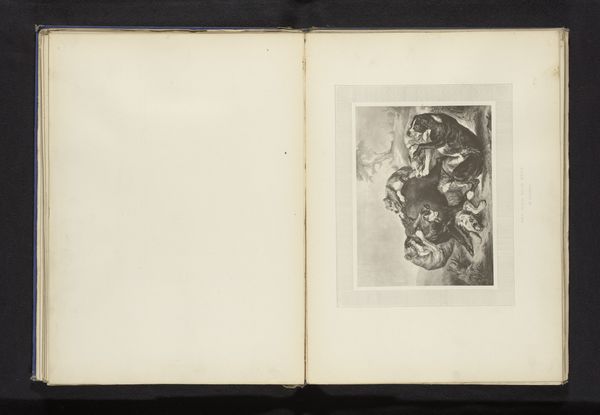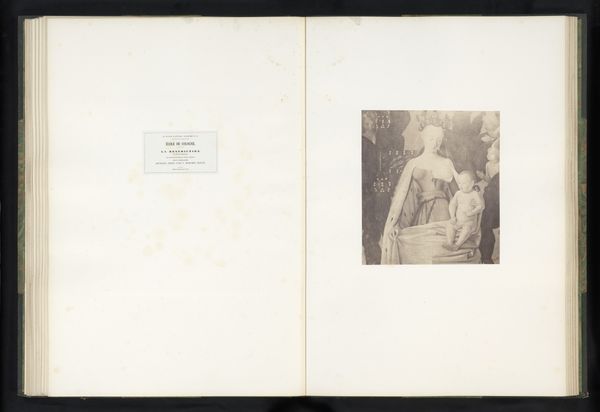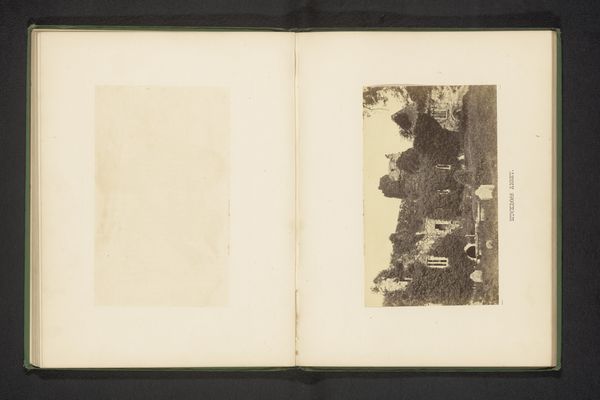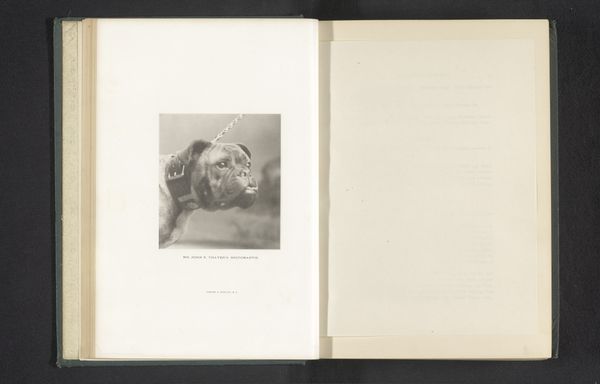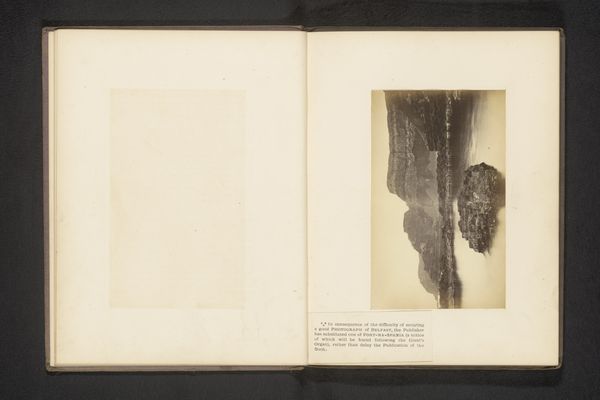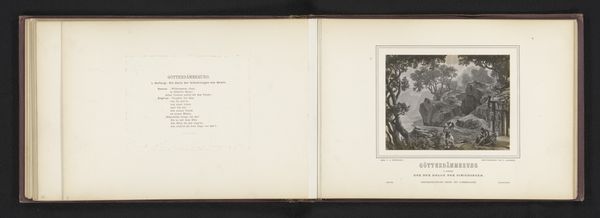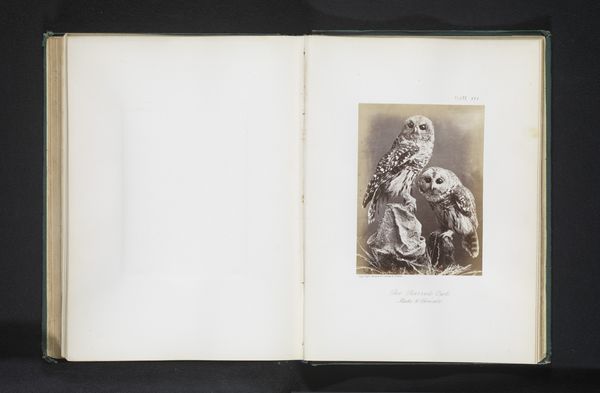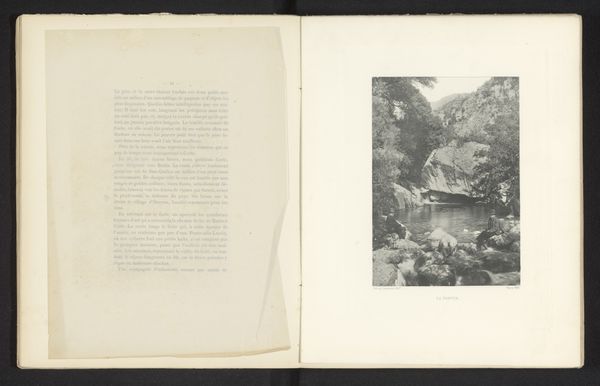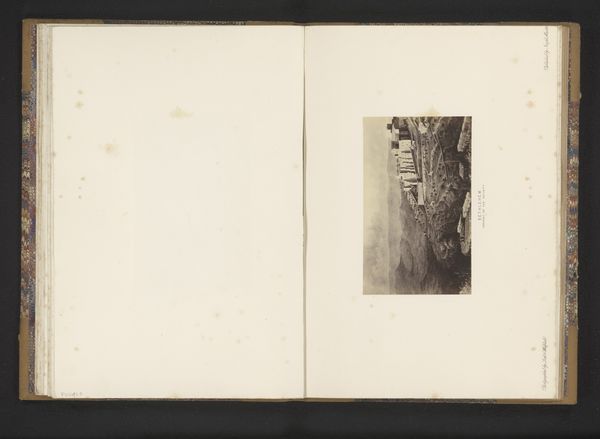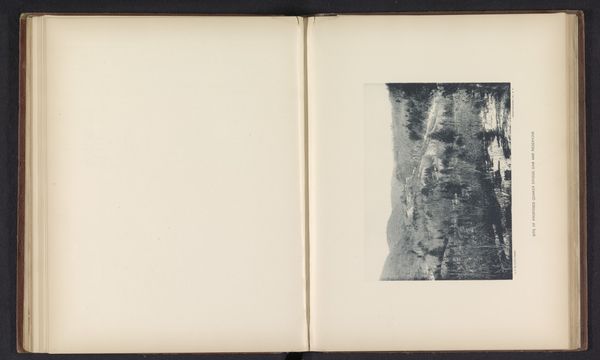
Fotoreproductie van de Opvoeding van Maria door Peter Paul Rubens before 1861
0:00
0:00
print, etching, photography
#
narrative-art
#
ink paper printed
# print
#
etching
#
figuration
#
11_renaissance
#
photography
#
history-painting
#
italian-renaissance
Dimensions: height 361 mm, width 250 mm
Copyright: Rijks Museum: Open Domain
Curator: So, here we have a photo reproduction of Peter Paul Rubens' painting "The Education of Mary," dating to before 1861. It’s presented as an etching and a print. What strikes you about this image at first glance? Editor: Well, I am drawn to the almost ghostly quality. The soft, gray tones give it this ethereal feel, like a memory half-forgotten but deeply resonant. It's melancholic but sweet somehow. Curator: Indeed, that fits with Rubens' era and Baroque aesthetic, in which religious scenes like this were invested with emotional intensity. I read this work as a convergence of earthly mentorship and divine guidance, expressed through symbolic figures. Editor: The cherubs floating above lend an almost dreamlike quality, don't they? What do they symbolize here? A sort of blessing on the young Mary? Curator: Precisely. These figures serve as emissaries of divine approval, watching and protecting Mary. The narrative tradition shows her tutelage guided by Saint Anne, her mother, bridging the mortal and divine realms. This is important because they underscore Mary’s exceptional destiny and innate piety, shaped within a nurturing family context. The original color piece offers lush details—what do we keep without it? Editor: The emotion remains. While the etching filters out color, I perceive it enhances an aura around them, maybe that's from knowing it's an older printing? The intimacy of their interaction. I sense this moment as formative, a key that unlocks the trajectory of her life, which, in turn, changed the world. It's almost intimidating! Curator: This links to larger historical themes regarding feminine virtue and education. This era viewed women's upbringing through a religious lens, molding moral exemplars within family circles. It reinforces society's expected roles but also acknowledges women's spiritual capacities and power. Editor: That's a compelling view, but maybe it flattens the lived experience. I see something intimate beyond the iconographic: the warmth between a mother and daughter as essential to finding yourself in the world. I am touched that, after so long, such an individual feeling comes out of the history. Curator: An excellent point! A photo print then acts as a cultural transmitter across generations. Its symbolic richness allows each observer to weave the meanings anew. Editor: Right! I see both a story of maternal guidance and perhaps something even grander, an imprint of time.
Comments
No comments
Be the first to comment and join the conversation on the ultimate creative platform.
